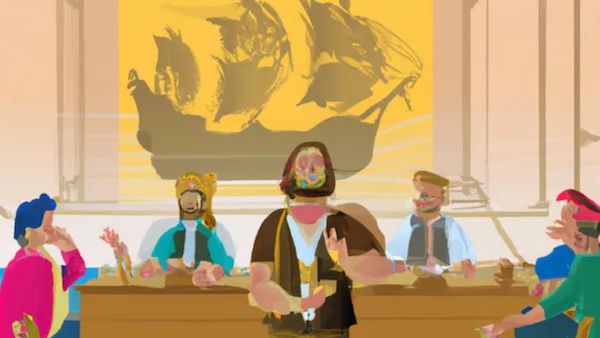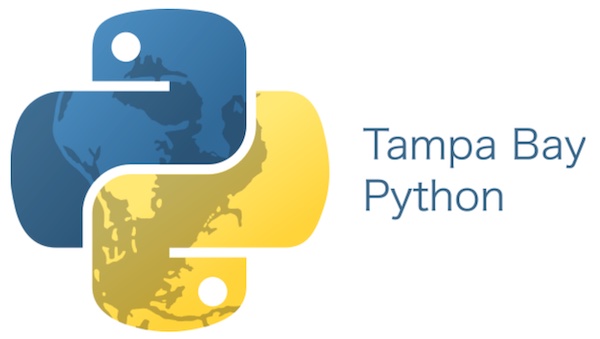
Here’s the “official unofficial” list of tech, entrepreneur, and nerd events for Tampa Bay and surrounding areas for the week of Monday, March 27 through Sunday, April 2, 2023.
This week’s events
Monday, March 27
| Group | Event Name | Time |
|---|---|---|
| TampaBayNetworkers • Pinellas Park, FL | Success Builders Free Business Blog | Mon, Mar 27 · 9:00 AM EDT |
| Agilest Downtown Tampa Office • Tampa, FL | SAFe RTE Release Train Engineer Training Certification – Florida Tampa | Mon, Mar 27, 9:00 AM |
| Tampa Bay Networking and Social Events • Largo, FL | Networking at Ford’s Garage | Mon, Mar 27 · 11:00 AM EDT |
| Young Professionals Networking JOIN in and Connect! • Saint Petersburg, FL | In person at Fords Garage St Pete | Mon, Mar 27 · 11:00 AM EDT |
| Tampa / St Pete Business Connections • Tampa, FL | Downtown St Pete Business Professionals Lunch | Mon, Mar 27 · 11:00 AM EDT |
| Young Professionals Networking JOIN in and Connect! • Saint Petersburg, FL | In person at Fords Garage St Pete | Mon, Mar 27 · 11:00 AM EDT |
| Tampa Bay Networking and Social Events • Largo, FL | Networking at Ford’s Garage | Mon, Mar 27 · 11:00 AM EDT |
| Ford’s Garage • St. Petersburg, FL | Downtown St Pete Networking Lunch All Welcome Free Parking at Fords Garage | Mon, Mar 27, 11:00 AM |
| Tampa Bay Networking and Social Events • Largo, FL | Networking at Cafe’ Delanie | Mon, Mar 27 · 11:30 AM EDT |
| Young Professionals Networking JOIN in and Connect! • Saint Petersburg, FL | Start the Week with more connections MONDAYS at Cafe Delanie All Welcome ! | Mon, Mar 27 · 11:30 AM EDT |
| Christian Professionals Network Tampa Bay • Largo, FL | Business Networking Meeting | Mon, Mar 27 · 11:30 AM EDT |
| Entrepreneurs Empower Empire • Orlando, FL | Entrepreneurs Empower Empire Official Meeting- The 2023 Business Plan | Mon, Mar 27 · 11:30 AM EDT |
| Entrepreneurs’ Empowerment Empire • Orlando, FL | Official Meeting-“The 2023 Business Plan” | Mon, Mar 27 · 11:30 AM EDT |
| Christian Professionals Network Tampa Bay • Largo, FL | Business Networking Meeting | Mon, Mar 27 · 11:30 AM EDT |
| Tampa Bay Business Networking Meetings & Mixers • Tampa, FL | Monday Business Introductions | Mon, Mar 27 · 11:30 AM EDT |
| Professional Business Networking with RGAnetwork.net • Tampa, FL | In PERSON Networking Lunch Sabal Park/Brandon Reserve your seat | Mon, Mar 27 · 11:30 AM EDT |
| Young Professionals Networking JOIN in and Connect! • Saint Petersburg, FL | Start the Week with more connections MONDAYS at Cafe Delanie All Welcome ! | Mon, Mar 27 · 11:30 AM EDT |
| Entrepreneurs Empower Empire • Orlando, FL | Entrepreneurs Empower Empire Official Meeting- The 2023 Business Plan | Mon, Mar 27 · 11:30 AM EDT |
| Entrepreneurs’ Empowerment Empire • Orlando, FL | Official Meeting-“The 2023 Business Plan” | Mon, Mar 27 · 11:30 AM EDT |
| Cafe Delanie • Tampa, FL | Start your week out Sabal Park Brandon Networking Lunch at Cafe Delanie! | Mon, Mar 27, 11:30 AM |
| Tampa Startup Founder 101 • Tampa, FL | 2023 Startup Trends: A Roundtable Discussion with Founders & Investors | Mon, Mar 27 · 1:00 PM EDT |
| TampaBay-Job-Links | Gulf Coast JFCS • Tampa, FL | Kick-Off Monday: 10 Ways to Stay Relevant During a Shifting Job Market | Mon, Mar 27, 1:00 PM |
| Free Video Production Classes – TV/Internet • Tampa, FL | YouTube Basics (ONLINE CLASS) – FREE for Hillsborough County Residents | Mon, Mar 27 · 4:00 PM EDT |
| Free Video Production Classes – TV/Internet • Tampa, FL | YouTube Basics (ONLINE CLASS) – FREE for Hillsborough County Residents | Mon, Mar 27 · 4:00 PM EDT |
| Toastmasters Division G • Ocala, FL | Radiant Ridge Toastmasters | Mon, Mar 27 · 5:15 PM EDT |
| Tampa Bay Tabletoppers • Tampa, FL | Monday Feast & Game Night | Mon, Mar 27 · 6:00 PM EDT |
| Critical Hit Games • Saint Petersburg, FL | MTG: Commander Night | Mon, Mar 27 · 6:00 PM EDT |
| Board Game Meetup: Board Game Boxcar • Orlando, FL | Monday Weekly Board Game Night! (Lazy Moon Colonial Location) | Mon, Mar 27 · 6:00 PM EDT |
| Sarasota “Doctor Who” Fan Meetup • Sarasota, FL | March Viewing Party | Mon, Mar 27 · 6:00 PM EDT |
| Brews N Board Games • Orlando, FL | Board Game Night at Persimmon Hollow Flamingo Crossings | Mon, Mar 27 · 6:00 PM EDT |
| Orlando Adventurer’s Guild • Orlando, FL | Tomb of Annhilation (APL 6 Forgotten Realms) – DM Carson | Mon, Mar 27 · 6:30 PM EDT |
| Shut Up & Write!® Orlando • Orlando, FL | Shut Up & Write!® Dr. Phillips/Orlando | Mon, Mar 27 · 6:30 PM EDT |
| Ironhack Tampa – Tech Careers, Learning and Networking • Tampa, FL | Interview Skills for Tech Career Success | Mon, Mar 27 · 7:00 PM EDT |
| Ironhack Tampa – Tech Careers, Learning and Networking • Tampa, FL | Interview Skills for Tech Career Success | Mon, Mar 27 · 7:00 PM EDT |
| Monster Learn-To-Trade Forex (Online) • Winter Park, FL | 🔥LIVE Trading Evening Show on Stocks, Forex, Crypto, Etc with David Stephenson | Mon, Mar 27 · 7:00 PM EDT |
| Tampa Bay Gaming: RPG’s, Board Games & more! • Tampa, FL | Board Game Night at Armada Games | Mon, Mar 27 · 7:00 PM EDT |
| Saint Petersburg Ladies book club • Saint Petersburg, FL | St. Pete Women’s Book Club | Mon, Mar 27 · 7:00 PM EDT |
| Light Study PRO – A Photography Workshop for Emerging Pros • Miami, FL | Members as far back as 2008 can access their photos | Mon, Mar 27 · 7:00 PM EDT |
| Orlando Stoics • Winter Park, FL | ONLINE: “Wittgenstein’s Private Language” | Mon, Mar 27 · 7:00 PM EDT |
| Sunshine Games • Tampa, FL | DigiMondays | Mon, Mar 27 · 7:30 PM EDT |
| Digital Entrepreneurship- Multiple sources of Income • Orlando, FL | How to make money online | Mon, Mar 27 · 9:00 PM EDT |
Tuesday, March 28
| Group | Event Name | Time |
|---|---|---|
| Tampa Bay Agile • Tampa, FL | v-Lean Coffee | Tue, Mar 28 · 7:30 AM EDT |
| Tampa Bay Agile • Tampa, FL | v-Lean Coffee | Tue, Mar 28 · 7:30 AM EDT |
| Write the Docs Florida • Orlando, FL | Focused conversation: Elevating our LinkedIn profiles and interactions | Tue, Mar 28 · 8:30 AM EDT |
| DOWN TOWN CENTER , Greater Carrollwood, FL • Greater Carrollwood, FL | PMP Certification Training in Greater Carrollwood, FL | Tue, Mar 28, 9:00 AM |
| Suncoast Credit Union Micro Enterprise Development Meetup • Tampa, FL | Innovative Business Strategies for Success | Tue, Mar 28 · 10:00 AM EDT |
| Suncoast Credit Union Micro Enterprise Development Meetup • Tampa, FL | Innovative Business Strategies for Success | Tue, Mar 28 · 10:00 AM EDT |
| Orlando Melrose Makers • Orlando, FL | In-Person: Makerspace Open Lab | Tue, Mar 28 · 10:30 AM EDT |
| Business Professionals of Pinellas, Pasco & Hillsborough • Largo, FL | Tuesday Westchase SeaGlass Business Networking Lunch | Tue, Mar 28 · 11:00 AM EDT |
| Florida Startup: Idea to IPO • Tampa, FL | How to Find Product Market Fit Quickly | Tue, Mar 28 · 11:00 AM EDT |
| Young Professionals Networking JOIN in and Connect! • Saint Petersburg, FL | Westchase Professional Business Networking Lunch ~ All Welcome | Tue, Mar 28 · 11:00 AM EDT |
| Tampa Bay Networking and Social Events • Largo, FL | Networking at SeaGlass Tavern~ All Welcome, join us!!! | Tue, Mar 28 · 11:00 AM EDT |
| The Entrepreneurs Success Academy • Sarasota, FL | Virtual Networking and Members Meetup | Tue, Mar 28 · 11:00 AM EDT |
| Tampa / St Pete Business Connections • Tampa, FL | Westchase Business Networking Lunch ~ All Welcome JOIN us and connect! | Tue, Mar 28 · 11:00 AM EDT |
| Business Professionals of Pinellas, Pasco & Hillsborough • Largo, FL | Tuesday Westchase SeaGlass Business Networking Lunch | Tue, Mar 28 · 11:00 AM EDT |
| Young Professionals Networking JOIN in and Connect! • Saint Petersburg, FL | Westchase Professional Business Networking Lunch ~ All Welcome | Tue, Mar 28 · 11:00 AM EDT |
| SeaGlass Tavern • Tampa, FL | Westchase Business Lunch all Welcome! JOIN us at SeaGlass Tavern11AM | Tue, Mar 28, 11:00 AM |
| Ironhack Tampa – Tech Careers, Learning and Networking • Tampa, FL | The **Inclusive** Future of Tech: Expert Panel | Tue, Mar 28 · 11:30 AM EDT |
| Wesley Chapel, Trinity, New Tampa, Business Professionals • Wesley Chapel, FL | New Tampa Networking Lunch at Glory Day’s Grill New Tampa | Tue, Mar 28 · 11:30 AM EDT |
| Tampa Bay Networking and Social Events • Largo, FL | Networking at Glory Days Grill | Tue, Mar 28 · 11:30 AM EDT |
| Pasco County Young Entrepreneurs/Business Owners All Welcome • Wesley Chapel, FL | Professional Business Networking Lunch Glory Day’s New Tampa | Tue, Mar 28 · 11:30 AM EDT |
| Wesley Chapel, Trinity, New Tampa, Business Professionals • Wesley Chapel, FL | New Tampa Networking Lunch at Glory Day’s Grill New Tampa | Tue, Mar 28 · 11:30 AM EDT |
| Pasco County Young Entrepreneurs/Business Owners All Welcome • Wesley Chapel, FL | Professional Business Networking Lunch Glory Day’s New Tampa | Tue, Mar 28 · 11:30 AM EDT |
| Simply Referrals Tampa Business Networking • Tampa, FL | The Business Networking Midday Power Hour by Simply Referrals on Zoom! | Tue, Mar 28 · 12:00 PM EDT |
| Clearwater Business Networking • Clearwater, FL | The Business Networking Midday Power Hour by Simply Referrals on Zoom! | Tue, Mar 28 · 12:00 PM EDT |
| Simply Referrals Clearwater Beach Business Networking • Clearwater Beach, FL | The Business Networking Midday Power Hour by Simply Referrals on Zoom!! | Tue, Mar 28 · 12:00 PM EDT |
| Manatee River Business Exchange Club • Ellenton, FL | Great group for referrals – Several new members – WE are growing!!! | Tue, Mar 28 · 12:00 PM EDT |
| Florida Talend User Group • Tampa, FL | Virtual User Group – Mastering Data with Talend | Tue, Mar 28 · 1:00 PM EDT |
| Network After Work Tampa – Networking Events • Tampa, FL | How to Maximize Email Marketing Virtual Summit | Tue, Mar 28 · 1:00 PM EDT |
| Freelancers Work Remote-Casual Coworking for Remote Workers • Saint Petersburg, FL | Kahwa Coffee – Downtown St. Pete | Tue, Mar 28 · 1:00 PM EDT |
| Freelancers Work Remote-Casual Coworking for Remote Workers • Saint Petersburg, FL | Kahwa Coffee – Downtown St. Pete | Tue, Mar 28 · 1:00 PM EDT |
| Entrepreneur Collaborative Center • Tampa, FL | Non-Profit Leadership Round Table | Tue, Mar 28, 2:00 PM |
| Business Anatomy • Spring Hill, FL | Business Anatomy – How To Raise Your Swag Game | Tue, Mar 28 · 3:00 PM EDT |
| Business Anatomy • Spring Hill, FL | Business Anatomy – How To Raise Your Swag Game | Tue, Mar 28 · 3:00 PM EDT |
| Free Video Production Classes – TV/Internet • Tampa, FL | Social Video Marketing Tips(ONLINE CLASS)-FREE for Hillsborough County Residents | Tue, Mar 28 · 4:30 PM EDT |
| Oldsmar Social Meetup • Oldsmar, FL | 🌮🍷🍹🍺🍸Taco Tuesday @ Snappers 🌮🍷🍹🍺🍸 | Tue, Mar 28 · 4:30 PM EDT |
| Tampa Hackerspace • Tampa, FL | Weekly Open Make Night | Tue, Mar 28 · 6:00 PM EDT |
| Tampa Hackerspace • Tampa, FL | Weekly Open Make Night | Tue, Mar 28 · 6:00 PM EDT |
| Nerdbrew Events • Tampa, FL | Spookeasy MtG Ybor Tuesdays! | Tue, Mar 28 · 6:00 PM EDT |
| Critical Hit Games • Saint Petersburg, FL | Hobby Night | Tue, Mar 28 · 6:00 PM EDT |
| Nerd Night Out • Tampa, FL | SpookEasy Kava Bar MtG Night | Tue, Mar 28 · 6:00 PM EDT |
| West Pasco Toastmasters Club #2824 • New Port Richey, FL | Weekly Meeting | Tue, Mar 28 · 6:30 PM EDT |
| Tampa – Sarasota – Venice Trivia & Quiz Meetup • Bradenton, FL | Trivia Night – Moose Lodge 2117 Smartphone Trivia Game Show | Tue, Mar 28 · 6:30 PM EDT |
| Pinellas Writers • Largo, FL | Weekly Group Meetings – All Writers Welcome! | Tue, Mar 28 · 6:30 PM EDT |
| Shut Up & Write!® Orlando • Orlando, FL | Shut Up & Write!® in Altamonte Springs/Lake Mary/Longwood | Tue, Mar 28 · 6:30 PM EDT |
| AMRoC Fab Lab • Tampa, FL | Registering & Maintaining your Florida Business | Tue, Mar 28, 6:30 PM |
| Defcon813 • Tampa, FL | Packet Stunts: Top 10 Defensive Network Techniques Bsides Tampa Prep | Tue, Mar 28 · 7:00 PM EDT |
| Dunedin Toastmasters 2166 • Dunedin, FL | Dunedin Toastmasters #2166 In Person and Virtual (Zoom) | Tue, Mar 28 · 7:00 PM EDT |
| The Orlando Python User Group • Orlando, FL | ChatGPT + Python | Tue, Mar 28 · 7:00 PM EDT |
| Central Florida Computer Society • Orlando, FL | Central Florida Computer Society TechSIG (Please join us!!) | Tue, Mar 28 · 7:00 PM EDT |
| Dunedin Toastmasters 2166 • Dunedin, FL | Dunedin Toastmasters #2166 In Person and Virtual (Zoom) | Tue, Mar 28 · 7:00 PM EDT |
| Creative Speaking St Pete • Saint Petersburg, FL | Creative Speaking | Tue, Mar 28 · 7:00 PM EDT |
| Sunshine Games • Tampa, FL | Yu-Gi-Oh Evening Tournament | Tue, Mar 28 · 7:00 PM EDT |
| St. Pete Beers ‘n Board Games for Young Adults • Saint Petersburg, FL | St. Pete Beers ‘n Board Games Meetup for Young Adults | Tue, Mar 28 · 7:00 PM EDT |
| Tampa Bay Wargaming Society • Seffner, FL | Learn to play Wild West Exodus at Nerdy Needs | Tue, Mar 28 · 7:00 PM EDT |
| Tampa Bay Gaming: RPG’s, Board Games & more! • Tampa, FL | D&D Adventurers League at Armada Games | Tue, Mar 28 · 7:00 PM EDT |
| Low Light Photography Group • Bradenton, FL | Low Light Photo Group | Tue, Mar 28 · 7:00 PM EDT |
| Florida Center for Creative Photography • Saint Petersburg, FL | AMA – Ask Me Anything Related to Photography, Computers and Software | Tue, Mar 28 · 7:00 PM EDT |
| The Pinellas County Meetup Group • Saint Petersburg, FL | Game/Craft Night | Tue, Mar 28 · 7:00 PM EDT |
| TB Chess – Tampa Bay – St. Petersburg Chess Meetup Group • Saint Petersburg, FL | Let’s play chess at 54th Ave Kava House! | Tue, Mar 28 · 7:30 PM EDT |
| Digital Entrepreneurship- Multiple sources of Income • Orlando, FL | Trading Tuesday with a Professional Trader | Tue, Mar 28 · 9:00 PM EDT |
Wednesday, March 29
| Group | Event Name | Time |
|---|---|---|
| Orlando Power BI User Group • Oviedo, FL | Designing Power BI reports for the public: tips & tricks | Alice Drummond | Wed, Mar 29 · 3:00 AM EDT |
| Young Professionals Networking JOIN in and Connect! • Saint Petersburg, FL | St Pete Networking Breakfast at the Hangar Meet St Pete’s Top Pro’s All Weclcome | Wed, Mar 29 · 7:30 AM EDT |
| Tampa Bay Networking and Social Events • Largo, FL | Networking at The Hanger Restaurant & Flight Lounge! | Wed, Mar 29 · 7:30 AM EDT |
| Network Professionals Inc. of South Pinellas (NPI) • Saint Petersburg, FL | NPI Profit Partners Chapter – Exchange Qualified Business Referrals | Wed, Mar 29 · 7:30 AM EDT |
| Tampa Bay Business Networking Meetings & Mixers • Tampa, FL | DOWNTOWN ST PETE YOUNG NETWORKING PROFESSIONALS BREAKFAST AT THE HANGAR! | Wed, Mar 29 · 7:30 AM EDT |
| EpiCenter at St. Petersburg College • Clearwater, FL | Coffee and Content: At the Intersection of Product and Content | Wed, Mar 29, 8:00 AM |
| 1 Million Cups – Orlando • Orlando, FL | 1 Million Cups – Orlando Weekly Meetup | Wed, Mar 29 · 8:30 AM EDT |
| Suncoast Drone Club • Tampa, FL | Mobbly Beach Park | Wed, Mar 29 · 9:00 AM EDT |
| Florida Center for Creative Photography • Saint Petersburg, FL | Coffee & Photography at O’Keefe’s Family Restaurant in Clearwater | Wed, Mar 29 · 9:00 AM EDT |
| Entrepreneur Collaborative Center • Tampa, FL | 1 Million Cups Tampa 2023! | Wed, Mar 29, 9:00 AM |
| SPC EpiCenter Campus • Clearwater, FL | Business. Finance, and Hospitality Job Fair | Wed, Mar 29, 10:00 AM |
| George M. Steinbrenner Field • Tampa, FL | JobNewsUSA.com Tampa Job Fair | Multi-Industry Hiring Event | Wed, Mar 29, 10:00 AM |
| Entrepreneur Collaborative Center • Tampa, FL | 1MC Tampa EXTRA JOLT! | Wed, Mar 29, 10:00 AM |
| Steinbrenner Field • Tampa, FL | 500+ JOBS From OVER 25 Companies at the March 29th Tampa Job Fair | Wed, Mar 29, 10:00 AM |
| Orlando Cybersecurity Meetup • Orlando, FL | Common trends across threat actors and attacker groups (Mitre ATT&CK) | Wed, Mar 29 · 11:00 AM EDT |
| COLLOCAMOTION Financial & Wellness,LLC • Altamonte Springs, FL | Computing Basics 101 Workshop | Wed, Mar 29, 11:00 AM |
| Tampa Bay Networking Meetings and Mixers • Tampa, FL | Carrollwood Networking Lunch! Join us and win! | Wed, Mar 29 · 11:30 AM EDT |
| Tampa Bay Networking and Social Events • Largo, FL | Networking at Glory Days Grill! | Wed, Mar 29 · 11:30 AM EDT |
| Young Professionals Networking JOIN in and Connect! • Saint Petersburg, FL | Brandon Business Professionals Just Love Coffee | Wed, Mar 29 · 11:30 AM EDT |
| Tampa / St Pete Business Connections • Tampa, FL | Brandon Business Professionals IN Person!!!! | Wed, Mar 29 · 11:30 AM EDT |
| Tampa Bay Networking and Social Events • Largo, FL | Networking at Just Love Coffee! | Wed, Mar 29 · 11:30 AM EDT |
| Tampa Bay Networking and Social Events • Largo, FL | Networking at Rusty Bucket Restaurant and Tavern! | Wed, Mar 29 · 11:30 AM EDT |
| Bradenton/Sarasota Networking Meetings and Mixers • Sarasota, FL | Business Networking Lunch | Wed, Mar 29 · 11:30 AM EDT |
| Tampa / St Pete Business Connections • Tampa, FL | Brandon Business Professionals IN Person!!!! | Wed, Mar 29 · 11:30 AM EDT |
| Young Professionals Networking JOIN in and Connect! • Saint Petersburg, FL | Brandon Business Professionals Just Love Coffee | Wed, Mar 29 · 11:30 AM EDT |
| Tampa Bay Networking and Social Events • Largo, FL | Networking at Glory Days Grill! | Wed, Mar 29 · 11:30 AM EDT |
| Bradenton/Sarasota Networking Meetings and Mixers • Sarasota, FL | Business Networking Lunch | Wed, Mar 29 · 11:30 AM EDT |
| Professional Business Networking with RGAnetwork.net • Tampa, FL | Carrollwood Professional Networking Lunch Wednesday All Welcome JOIN us | Wed, Mar 29 · 11:30 AM EDT |
| Entrepreneurs & Business Owners of Sarasota & Bradenton • Sarasota, FL | Sarasota Business Networking Lunch All Welcome, Just purchase Lunch! | Wed, Mar 29 · 11:30 AM EDT |
| Just Love Coffee Cafe – Brandon FL • Brandon, FL | Brandon Young Professionals Networking Lunch at Just Love Coffee Wednesdays | Wed, Mar 29, 11:30 AM |
| Web Design And SEO/SEM Three Sixty Degrees • Apollo Beach, FL | Web Design And SEO/SEM Three Sixty Degrees | Wed, Mar 29 · 12:00 PM EDT |
| Web Design And SEO/SEM Three Sixty Degrees • Apollo Beach, FL | Web Design And SEO/SEM Three Sixty Degrees | Wed, Mar 29 · 12:00 PM EDT |
| Sarasota Web Development Meetup Group • Sarasota, FL | Lunch Hour Meetup | Wed, Mar 29 · 12:00 PM EDT |
| Professional Women’s Meetup • Laurel, FL | Getting Over the Mid-Week Hump | Wed, Mar 29 · 12:00 PM EDT |
| Tampa Startup Founder 101 • Tampa, FL | Ask an Investor | Open Q&A with Investors that Write ‘First Checks’ for Startups | Wed, Mar 29 · 1:00 PM EDT |
| I Refuse 2 Fail Virtual Meetings • Pinellas Park, FL | FREE 15+30 Virtual Meetings | Wed, Mar 29 · 2:45 PM EDT |
| TampaBayNetworkers • Pinellas Park, FL | FREE 15+30 Virtual Networking | Wed, Mar 29 · 2:45 PM EDT |
| I Refuse 2 Fail Virtual Meetings • Pinellas Park, FL | FREE 15+30 Virtual Meetings | Wed, Mar 29 · 2:45 PM EDT |
| TampaBayNetworkers • Pinellas Park, FL | FREE 15+30 Virtual Networking | Wed, Mar 29 · 2:45 PM EDT |
| Network After Work Tampa – Networking Events • Tampa, FL | The AI Sales Assistant – How to Book B2B Demos on Autopilot | Wed, Mar 29 · 3:00 PM EDT |
| Network After Work Tampa – Networking Events • Tampa, FL | The Ultimate 2023 Client Acquisition Marketing Guide | Wed, Mar 29 · 3:00 PM EDT |
| Florida Startup: Idea to IPO • Tampa, FL | FREE WEBINAR: How to Outsource Development of Your App | Wed, Mar 29 · 5:00 PM EDT |
| Brandon Boardgamers • Brandon, FL | Board Gaming – In Person | Wed, Mar 29 · 5:00 PM EDT |
| Sarasota Business Exchange Club • Sarasota, FL | Rusty Bucket Restaurant @UTC Happy Hour Networking! | Wed, Mar 29 · 5:30 PM EDT |
| Sarasota Business Exchange Club • Sarasota, FL | We ARE meeting again at Rusty Bucket Restaurant | Wed, Mar 29 · 5:30 PM EDT |
| Sarasota Business Exchange Club • Sarasota, FL | We ARE meeting again at Rusty Bucket Restaurant | Wed, Mar 29 · 5:30 PM EDT |
| Tampa Gaming Guild • Tampa, FL | Wednesday Board Game Night | Wed, Mar 29 · 5:30 PM EDT |
| Suncoast Critical Thinking Discussion Group • Sarasota, FL | CRITICAL THINKERS Dinner at Libby’s Osprey(by SMH) | Wed, Mar 29 · 5:30 PM EDT |
| Tampa Area Crypto And NFT IRL • Lutz, FL | Casual metaverse,NFTs, and Crypto discussions | Wed, Mar 29 · 6:00 PM EDT |
| Crypto & NFT Investor’s Club–Sarasota/Bradenton Chapter • Sarasota, FL | Casual Crypto and NFT talks. | Wed, Mar 29 · 6:00 PM EDT |
| Tampa Area Crypto And NFT IRL • Lutz, FL | Casual metaverse,NFTs, and Crypto discussions | Wed, Mar 29 · 6:00 PM EDT |
| Crypto & NFT Investor’s Club–Sarasota/Bradenton Chapter • Sarasota, FL | Casual Crypto and NFT talks. | Wed, Mar 29 · 6:00 PM EDT |
| Nerdbrew Events • Tampa, FL | Games & Grog @ Felicitous! | Wed, Mar 29 · 6:00 PM EDT |
| The Tampa Chapter of the Society for the Exploration of Play • Tampa, FL | Critical Hit Games: Board Game Night | Wed, Mar 29 · 6:00 PM EDT |
| Critical Hit Games • Saint Petersburg, FL | Board Game Night | Wed, Mar 29 · 6:00 PM EDT |
| Clermont Nerd Games • Clermont, FL | Dungeons & Dragons One Shot Wednesdays | Wed, Mar 29 · 6:00 PM EDT |
| Tampa Bay Gaming: RPG’s, Board Games & more! • Tampa, FL | Hobby Night – Minis Painting Tips & Tricks at Armada Games | Wed, Mar 29 · 6:00 PM EDT |
| Orlando D and D 5th Edition custom scenarios or campaigns • Orlando, FL | D&D 5e Savage Frontiers | Wed, Mar 29 · 6:00 PM EDT |
| Board Game Meetup: Board Game Boxcar • Orlando, FL | Blood on the Clocktower & Board Games! (Deadwords Brewing Location) | Wed, Mar 29 · 6:00 PM EDT |
| Brews N Board Games • Orlando, FL | Board Game Night at Deadwords Brewing | Wed, Mar 29 · 6:00 PM EDT |
| Drunk’n Meeples the Social Tabletop (Board) Gamers • Palm Harbor, FL | Game Night! | Wed, Mar 29 · 6:30 PM EDT |
| The Weirder Things Book Club • Parrish, FL | A Dowry of Blood S.T. Gibson-midway point | Wed, Mar 29 · 6:30 PM EDT |
| CREDO Conduit • Orlando, FL | Success Stories: Inspiring Black Women In Tech & Their Journeys To The Top | Wed, Mar 29, 6:30 PM |
| Tampa Bay PHP • Tampa, FL | Pinellas County PHP Meetup | Wed, Mar 29 · 7:00 PM EDT |
| Tampa Bay Coalition of Reason • Tampa, FL | Skeptical Inquirer Presents: The Skeptics’ Guide to the Future | Steven Novella | Wed, Mar 29 · 7:00 PM EDT |
| Tampa Bay Bitcoin • Tampa, FL | [In-Person] Bitcoin Meetup in St.Pete | Wed, Mar 29 · 7:00 PM EDT |
| Tampa Bay PHP • Tampa, FL | Pinellas County PHP Meetup | Wed, Mar 29 · 7:00 PM EDT |
| Tampa Bay Bitcoin • Tampa, FL | [In-Person] Bitcoin Meetup in St.Pete | Wed, Mar 29 · 7:00 PM EDT |
| MakerFX Makerspace • Orlando, FL | MakerFX Monthly Membership Meeting | Wed, Mar 29 · 7:00 PM EDT |
| Castaways Euchre Club • Saint Petersburg, FL | Castaways Euchre Club | Wed, Mar 29 · 7:00 PM EDT |
| Tampa – Sarasota – Venice Trivia & Quiz Meetup • Bradenton, FL | Smartphone Trivia Game Show at Wilders Pizza | Wed, Mar 29 · 7:00 PM EDT |
| Adventures On Tap DnD and Board Games • Orlando, FL | Nerd Night: Board Games and Beer at Deadwords Brewing | Wed, Mar 29 · 7:00 PM EDT |
| Central Florida AD&D (1st ed.) Grognards Guild • Winter Park, FL | New Beginnings & Old Rivalries | Wed, Mar 29 · 7:00 PM EDT |
| Communication Skills for Quiet People • Orlando, FL | Conversation Starters For The Introvert And Quiet Person | Wed, Mar 29 · 7:00 PM EDT |
| Nerd Night Out • Tampa, FL | Game Night @ Felicitous on 42nd by USF | Wed, Mar 29 · 7:00 PM EDT |
| Professionals Meetup For Networking And Social Skillsets • Orlando, FL | How to Express Yourself and Connect with People | Wed, Mar 29 · 7:00 PM EDT |
| Sunshine Games • Tampa, FL | Cardfight Vanguard!! OverDress Weekly | Wed, Mar 29 · 7:30 PM EDT |
| Women In Linux • Tampa, FL | Understanding Linux | Wed, Mar 29 · 8:00 PM EDT |
| Work From Home -Online Business Opportunities and Networking • Tampa, FL | How To Easily Start Up A Successful Print on Demand Business | Wed, Mar 29 · 8:00 PM EDT |
| Work From Home -Online Business Opportunities and Networking • Tampa, FL | How To Easily Start Up A Successful Print on Demand Business | Wed, Mar 29 · 8:00 PM EDT |
| Tampa / St Pete Business Connections • Tampa, FL | Carollwood Professionals Networking Lunch! | Wed, Mar 29 · 11:30 PM EDT |
Thursday, March 30
| Group | Event Name | Time |
|---|---|---|
| Wesley Chapel, Trinity, New Tampa, Business Professionals • Wesley Chapel, FL | Business Over Breakfast ~ Happy Hangar IN PERSON JOIN US! | Thu, Mar 30 · 7:30 AM EDT |
| Pasco County Young Entrepreneurs/Business Owners All Welcome • Wesley Chapel, FL | Happy Hangar Early Bird Professionals Networking | Thu, Mar 30 · 7:30 AM EDT |
| Pasco County Young Entrepreneurs/Business Owners All Welcome • Wesley Chapel, FL | Happy Hangar Early Bird Professionals Networking | Thu, Mar 30 · 7:30 AM EDT |
| Just Love Coffee Cafe – Brandon FL • Brandon, FL | Morning Coffee Investors Meetup | Thu, Mar 30, 7:30 AM |
| Tampa Bay Networking and Social Events • Largo, FL | LUTZ, FL – HAPPY HANGER CAFE THURSDAY NETWORKING | Thu, Mar 30 · 8:00 AM EDT |
| Agile Mindset Book Club (Tampa, FL) • Tampa, FL | 8 Week series 7 Habits of Highly Effective People | Thu, Mar 30 · 8:00 AM EDT |
| Agile Mindset Book Club (Tampa, FL) • Tampa, FL | 8 Week series 7 Habits of Highly Effective People | Thu, Mar 30 · 8:00 AM EDT |
| Loews Portofino Bay Hotel at Universal Orlando • Orlando, FL | VTScadaFest 2023 | Thu, Mar 30, 8:00 AM |
| Loews Portofino Bay Hotel at Universal Orlando • Orlando, FL | VTScadaFest 2023 [Tax-Exempt Entities] | Thu, Mar 30, 8:00 AM |
| The Florida Business Incubator, Inc. • Dunedin, FL | 2023 Reset – Small Business SPARK! | Thu, Mar 30 · 8:30 AM EDT |
| Clearwater Entrepreneurs’ Round Table • Dunedin, FL | 2023 SPARK Your Small Business! | Thu, Mar 30 · 8:30 AM EDT |
| TampaBayNetworkers • Pinellas Park, FL | Suncoast Networkers | Thu, Mar 30 · 8:30 AM EDT |
| Clearwater Entrepreneurs’ Round Table • Dunedin, FL | 2023 SPARK Your Small Business! | Thu, Mar 30 · 8:30 AM EDT |
| The Florida Business Incubator, Inc. • Dunedin, FL | 2023 Reset – Small Business SPARK! | Thu, Mar 30 · 8:30 AM EDT |
| TampaBayNetworkers • Pinellas Park, FL | Suncoast Networkers | Thu, Mar 30 · 8:30 AM EDT |
| Freelancers Work Remote-Casual Coworking for Remote Workers • Saint Petersburg, FL | GulfPerk Coffee Bar Coworking Meetup | Thu, Mar 30 · 10:00 AM EDT |
| Freelancers Work Remote-Casual Coworking for Remote Workers • Saint Petersburg, FL | GulfPerk Coffee Bar Coworking Meetup | Thu, Mar 30 · 10:00 AM EDT |
| Orlando Melrose Makers • Orlando, FL | In-Person: Makerspace Open Lab | Thu, Mar 30 · 10:30 AM EDT |
| Florida Startup: Idea to IPO • Tampa, FL | How to Cut Product Development Costs by up to 50%! | Thu, Mar 30 · 11:00 AM EDT |
| Business Professionals of Pinellas, Pasco & Hillsborough • Largo, FL | Clearwater Professional Networking Lunch | Thu, Mar 30 · 11:00 AM EDT |
| Young Professionals Networking JOIN in and Connect! • Saint Petersburg, FL | The Founders Meeting where it all Began! JOIN us! Bring a guest and get a gift | Thu, Mar 30 · 11:00 AM EDT |
| Tampa Bay Networking and Social Events • Largo, FL | Pinellas County’s Largest Networking Lunch and your invited! | Thu, Mar 30 · 11:00 AM EDT |
| Tampa / St Pete Business Connections • Tampa, FL | Clearwater/Central Pinellas Networking Lunch JOIN us and connect your business | Thu, Mar 30 · 11:00 AM EDT |
| Business Professionals of Pinellas, Pasco & Hillsborough • Largo, FL | Clearwater Professional Networking Lunch | Thu, Mar 30 · 11:00 AM EDT |
| Tampa Bay Business Networking Happy Hour/Meetings/Meet Up • Clearwater, FL | Pinellas County’s Largest Networking Lunch and your invited! | Thu, Mar 30 · 11:00 AM EDT |
| Young Professionals Networking JOIN in and Connect! • Saint Petersburg, FL | The Founders Meeting where it all Began! JOIN us! Bring a guest and get a gift | Thu, Mar 30 · 11:00 AM EDT |
| 2216 51st Ave E unit 111 • Palmetto, FL | Power America Tour- Tampa | Thu, Mar 30, 11:00 AM |
| Wesley Chapel, Trinity, New Tampa, Business Professionals • Wesley Chapel, FL | Wesley Chapel Professional Networking Lunch | Thu, Mar 30 · 11:30 AM EDT |
| Pasco County Young Entrepreneurs/Business Owners All Welcome • Wesley Chapel, FL | Wesley Chapel Professional Networking Lunch at Pinchers Wiregrass Mall | Thu, Mar 30 · 11:30 AM EDT |
| Professional Business Networking with RGAnetwork.net • Tampa, FL | Breakroom Bar & Grill 11:28 Doors open at 11:00am IN Person | Thu, Mar 30 · 11:30 AM EDT |
| Professional Business Networking with RGAnetwork.net • Tampa, FL | Breakroom Bar & Grill 11:28 Doors open at 11:00am IN Person | Thu, Mar 30 · 11:30 AM EDT |
| Wesley Chapel, Trinity, New Tampa, Business Professionals • Wesley Chapel, FL | Wesley Chapel Professional Networking Lunch | Thu, Mar 30 · 11:30 AM EDT |
| Network Professionals Inc. of South Pinellas (NPI) • Saint Petersburg, FL | NPI Power Lunch – Exchange Qualified Business Referrals | Thu, Mar 30 · 11:30 AM EDT |
| Simply Referrals Tampa Business Networking • Tampa, FL | The Business Networking Midday Power Hour by Simply Referrals on Zoom! | Thu, Mar 30 · 12:00 PM EDT |
| Clearwater Business Networking • Clearwater, FL | The Business Networking Midday Power Hour by Simply Referrals on Zoom! | Thu, Mar 30 · 12:00 PM EDT |
| Tampa Bay Gaming: RPG’s, Board Games & more! • Tampa, FL | Commander Open Play Night at Armada Games | Thu, Mar 30 · 1:00 PM EDT |
| Tampa Bay Gaming: RPG’s, Board Games & more! • Tampa, FL | Commander Open Play Night at Armada Games | Thu, Mar 30 · 1:00 PM EDT |
| Armature Works • Tampa, FL | Cyber Crime Resilience | Thu, Mar 30, 1:30 PM |
| Orlando Cybersecurity Meetup • Orlando, FL | 5 best practices to thwart identity-based attacks in 2023 | Thu, Mar 30 · 2:00 PM EDT |
| Edgerunners SoFlo • Fort Lauderdale, FL | MEGACON Orlando (Attendance/Discussion) | Thu, Mar 30 · 4:00 PM EDT |
| Tampa – Sarasota – Venice Trivia & Quiz Meetup • Bradenton, FL | Trivia Night – Bunkers Bar of Sun City Center Smartphone Trivia Game Show | Thu, Mar 30 · 5:00 PM EDT |
| Florida Center for Creative Photography • Saint Petersburg, FL | FCCP Weekly Photo Assignment 116: Hallway | Thu, Mar 30 · 5:00 PM EDT |
| Orlando Tech and Beer • Orlando, FL | TAB | Orlando Tech and Beer | Thu, Mar 30 · 5:30 PM EDT |
| Tampa Bay Google Cloud User Group • Tampa, FL | Google Cloud – Hands on Lab for Beginners | Thu, Mar 30 · 6:00 PM EDT |
| Ironhack Tampa – Tech Careers, Learning and Networking • Tampa, FL | The Basics of Web Development | Thu, Mar 30 · 6:00 PM EDT |
| Tampa Bay DevOps Meetup • Tampa, FL | Platform Engineering – Improving the Developer Experience | Thu, Mar 30 · 6:00 PM EDT |
| Network After Work Tampa – Networking Events • Tampa, FL | Tampa at WXYZ Bar at Aloft Tampa Downtown | Thu, Mar 30 · 6:00 PM EDT |
| Entrepreneur Social Club • Saint Petersburg, FL | Entrepreneur Social Club | Thu, Mar 30 · 6:00 PM EDT |
| The Palm Investors Club • Orlando, FL | March Meet Up | Thu, Mar 30 · 6:00 PM EDT |
| Tampa Bay Google Cloud User Group • Tampa, FL | Google Cloud – Hands on Lab for Beginners | Thu, Mar 30 · 6:00 PM EDT |
| Tampa Bay DevOps Meetup • Tampa, FL | Platform Engineering – Improving the Developer Experience | Thu, Mar 30 · 6:00 PM EDT |
| Ironhack Tampa – Tech Careers, Learning and Networking • Tampa, FL | The Basics of Web Development | Thu, Mar 30 · 6:00 PM EDT |
| Network After Work Tampa – Networking Events • Tampa, FL | Tampa at WXYZ Bar at Aloft Tampa Downtown | Thu, Mar 30 · 6:00 PM EDT |
| Brandon and Seffner area AD&D and Rifts (Palladium) Group • Seffner, FL | 2nd ed. AD&D Campaign. | Thu, Mar 30 · 6:00 PM EDT |
| Indian Rocks Beach D&D 5e Meetup Group • Indian Rocks Beach, FL | Curse of Strahd Session 4 | Thu, Mar 30 · 6:00 PM EDT |
| Critical Hit Games • Saint Petersburg, FL | Warhammer Night | Thu, Mar 30 · 6:00 PM EDT |
| Sarasota Strategy Board Game League • Sarasota, FL | Blood Rage – Thursday March 30! | Thu, Mar 30 · 6:00 PM EDT |
| Orlando Board Gaming Weekly Meetup • Orlando, FL | Central Florida Board Gaming at The Collective | Thu, Mar 30 · 6:00 PM EDT |
| Clearwater Boardgame Night • Saint Petersburg, FL | Clearwater Board Game Night | Thu, Mar 30 · 6:00 PM EDT |
| We Write Here Black and Women of Color Writing Group • Tampa, FL | Weekday Writing Get Down | Thu, Mar 30 · 6:00 PM EDT |
| CREDO Conduit • Orlando, FL | Navigating the Startup Journey: Overcoming Founder Challenges | Thu, Mar 30, 6:00 PM |
| WXYZ Bar at Aloft Tampa Downtown • Tampa, FL | Network After Work Tampa at WXYZ Bar at Aloft Tampa Downtown | Thu, Mar 30, 6:00 PM |
| 5101 N Rome Ave • Tampa, FL | CRES Chat – UPDATED DATE 3/30!! | Thu, Mar 30, 6:00 PM |
| IIBA Tampa Bay • Tampa, FL | How to User Your BA Mindset to Succeed in Business Analysis | Thu, Mar 30 · 6:30 PM EDT |
| Makerspaces Pinellas Meetup Group • Largo, FL | Laser cutting and engraving | Thu, Mar 30 · 6:30 PM EDT |
| The Pinellas County Young “Professionals” • Saint Petersburg, FL | Happy Hour: Rooftop Series – 360 Lounge (Hotel Zamora) | Thu, Mar 30 · 6:30 PM EDT |
| Tampa 20’s and 30’s Social Crew • Tampa, FL | Trivia at Hidden Springs Ale Works | Thu, Mar 30 · 6:30 PM EDT |
| Wesley Chapel Social Meetup meet and greet • Wesley Chapel, FL | Trivia night | Thu, Mar 30 · 6:30 PM EDT |
| Tampa Free Writing Group • Tampa, FL | Writing Meetup | Thu, Mar 30 · 6:30 PM EDT |
| Tampa Bay Bitcoin • Tampa, FL | [Special Event] Discussion with local rancher | Thu, Mar 30 · 7:00 PM EDT |
| Tampa Hackerspace • Tampa, FL | Girls Who Code for Grades 6-12 | Thu, Mar 30 · 7:00 PM EDT |
| Beginning Web Development • Windermere, FL | Weekly Meetup | Thu, Mar 30 · 7:00 PM EDT |
| IIBA Tampa Bay • Tampa, FL | BABOK IIBA Tampa Bay Study Group | Thu, Mar 30 · 7:00 PM EDT |
| Tampa Hackerspace • Tampa, FL | Girls Who Code for Grades 6-12 | Thu, Mar 30 · 7:00 PM EDT |
| Tampa Bay Bitcoin • Tampa, FL | [Special Event] Discussion with local rancher | Thu, Mar 30 · 7:00 PM EDT |
| Beginning Web Development • Windermere, FL | Weekly Meetup | Thu, Mar 30 · 7:00 PM EDT |
| TB Chess – Tampa Bay – St. Petersburg Chess Meetup Group • Saint Petersburg, FL | Thursday chess at 54th Ave Kava House! | Thu, Mar 30 · 7:00 PM EDT |
| Sunshine Games • Tampa, FL | One Piece Thursdays | Thu, Mar 30 · 7:00 PM EDT |
| Cocktails and Convo: Book club for RomCom Lovers • Pinellas Park, FL | Cocktails and Convos social hour | Thu, Mar 30 · 7:00 PM EDT |
| Live streaming production and talent • Tarpon Springs, FL | Live streaming production and talent | Thu, Mar 30 · 7:00 PM EDT |
| Chan’s Book Club of Tampa Bay • Tampa, FL | The Perfect Marriage by Jeneva Rose | Thu, Mar 30 · 7:00 PM EDT |
| Indica Cafe Events • Tampa, FL | Dungeons and Dragons Thursday Nights at 7 | Thu, Mar 30 · 7:00 PM EDT |
| Orlando Black Horror Movie Club • Orlando, FL | Discussion on horror movie TBD | Thu, Mar 30 · 7:00 PM EDT |
| Algorythm Online Classroom • Tampa, FL | ALGORYTHM™️| Intro to Machine Learning | Thu, Mar 30, 7:00 PM |
| St. Pete Booze and Book Club • Saint Petersburg, FL | Cherry – Nico Walker | Thu, Mar 30 · 7:30 PM EDT |
| Orlando Comic Book Society • Orlando, FL | MegaCon 2023 Get-Together | Thu, Mar 30 · 8:30 PM EDT |
Friday, March 31
| Group | Event Name | Time |
|---|---|---|
| Loews Portofino Bay Hotel at Universal Orlando • Orlando, FL | VTScadaFest 2023 | Thu, Mar 30, 8:00 AM |
| Loews Portofino Bay Hotel at Universal Orlando • Orlando, FL | VTScadaFest 2023 [Tax-Exempt Entities] | Thu, Mar 30, 8:00 AM |
| Winter Park Toastmasters – Learn while having FUN! • Winter Park, FL | Improve your communication, listening, and leadership skills | Fri, Mar 31 · 7:15 AM EDT |
| Agile Orlando • Orlando, FL | Agile in the Morning (hybrid meeting) | Fri, Mar 31 · 7:30 AM EDT |
| Entrepreneurs & Business Owners of Sarasota & Bradenton • Sarasota, FL | A.C.T. Acquire Connections Today Morning Business Networking All Welcome! | Fri, Mar 31 · 7:45 AM EDT |
| Entrepreneurs & Business Owners of Sarasota & Bradenton • Sarasota, FL | A.C.T. Acquire Connections Today Morning Business Networking All Welcome! | Fri, Mar 31 · 7:45 AM EDT |
| Full Sail University • Winter Park, FL | Unity Developer Workshop at VRARA Immersive Technology Summit in Orlando | Fri, Mar 31, 8:00 AM |
| Brandon Biz Pros • Brandon, FL | Build your Business with Brandon Biz Pros | Fri, Mar 31 · 8:30 AM EDT |
| Young Professionals Networking JOIN in and Connect! • Saint Petersburg, FL | Tampa Young Professionals Virtual Networking Friday Morning All WElCOME | Fri, Mar 31 · 8:45 AM EDT |
| Professional Business Networking with RGAnetwork.net • Tampa, FL | A.C.T. Acquire Connections Today Morning Business Networking All Welcome! | Fri, Mar 31 · 8:45 AM EDT |
| Young Professionals Networking JOIN in and Connect! • Saint Petersburg, FL | Tampa Young Professionals Virtual Networking Friday Morning All WElCOME | Fri, Mar 31 · 8:45 AM EDT |
| Tampa Bay Networking Meetings and Mixers • Tampa, FL | Business over Breakfast Clearwater | Fri, Mar 31 · 9:00 AM EDT |
| Tampa Bay Networking and Social Events • Largo, FL | Networking over breakfast | Fri, Mar 31 · 9:00 AM EDT |
| Project Codex • Orlando, FL | Virtual Coffee | Fri, Mar 31 · 9:00 AM EDT |
| Florida Center for Creative Photography • Saint Petersburg, FL | FCCP Morning Photowalk at Florida Botanical Garden | Fri, Mar 31 · 9:00 AM EDT |
| Certification Planner, LLC • Tampa, FL | Updated ITIL®4 Foundation 2 Days Certification Training in Tampa | Fri, Mar 31, 9:00 AM |
| Christian Professionals Network Tampa Bay • Largo, FL | Improve Speaking Skills & Build Confidence | Fri, Mar 31 · 9:25 AM EDT |
| Business Professionals of Pinellas, Pasco & Hillsborough • Largo, FL | International Networking at McAlisters Deli every Friday | Fri, Mar 31 · 11:30 AM EDT |
| Tampa Bay Networking Meetings and Mixers • Tampa, FL | Friday Business Introductions Tampa | Fri, Mar 31 · 11:30 AM EDT |
| Tampa Bay Networking and Social Events • Largo, FL | Westshore Business Networking Lunch at McAlisters Deli Every Friday All Welcome | Fri, Mar 31 · 11:30 AM EDT |
| Tampa / St Pete Business Connections • Tampa, FL | International Professionals Networking Meeting | Fri, Mar 31 · 11:30 AM EDT |
| Tampa / St Pete Business Connections • Tampa, FL | International Professionals Networking Meeting | Fri, Mar 31 · 11:30 AM EDT |
| Business Professionals of Pinellas, Pasco & Hillsborough • Largo, FL | International Networking at McAlisters Deli every Friday | Fri, Mar 31 · 11:30 AM EDT |
| Tampa Bay Business Networking Happy Hour/Meetings/Meet Up • Clearwater, FL | International Networking Westshore McAlisters Deli | Fri, Mar 31 · 11:30 AM EDT |
| Professional Business Networking with RGAnetwork.net • Tampa, FL | Friday International Business Introductions at McAlisters Westshore | Fri, Mar 31 · 11:30 AM EDT |
| Tampa Bay Networking and Social Events • Largo, FL | Westshore Business Networking Lunch at McAlisters Deli Every Friday All Welcome | Fri, Mar 31 · 11:30 AM EDT |
| McAlister’s Deli • Tampa, FL | 11:30 AM Friday Networking South Tampa @ McAlisters Deli International Mall | Fri, Mar 31, 11:30 AM |
| Freelancers Work Remote-Casual Coworking for Remote Workers • Saint Petersburg, FL | Kahwa Coffee (Old Northeast St Pete) Coworking Meetup | Fri, Mar 31 · 1:00 PM EDT |
| Freelancers Work Remote-Casual Coworking for Remote Workers • Saint Petersburg, FL | Kahwa Coffee (Old Northeast St Pete) Coworking Meetup | Fri, Mar 31 · 1:00 PM EDT |
| Brandon Boardgamers • Brandon, FL | WEEKLY FRIDAY NIGHT GAMING AT GAMER’S COMMAND | Fri, Mar 31 · 5:00 PM EDT |
| Clermont Nerd Games • Clermont, FL | Board Game Night! | Fri, Mar 31 · 5:00 PM EDT |
| Meeple Movers Gaming Group • Ocala, FL | Friday Night Board Games at Meeple Movers Cafe | Fri, Mar 31 · 5:00 PM EDT |
| Bradenton Photo Group • Bradenton, FL | Sony A7R5 Camera Class and Demo – Friday | Fri, Mar 31 · 5:00 PM EDT |
| Tampa Gaming Guild • Tampa, FL | Friday Board Game Night | Fri, Mar 31 · 5:30 PM EDT |
| Happy Hour For Remote Workers • Saint Petersburg, FL | Happy Hour at The Lure | Fri, Mar 31 · 6:00 PM EDT |
| Tampa Bay Gaming: RPG’s, Board Games & more! • Tampa, FL | Board Game night at The Strange Realms in Carrollwood Friday, 6 PM | Fri, Mar 31 · 6:00 PM EDT |
| Dunnellon Area Board Gamers • Dunnellon, FL | Friday Night Board Gaming | Fri, Mar 31 · 6:00 PM EDT |
| Happy Hour For Remote Workers • Saint Petersburg, FL | Happy Hour at The Lure | Fri, Mar 31 · 6:00 PM EDT |
| Nerd Night Out • Tampa, FL | Taps & Drafts | Fri, Mar 31 · 6:00 PM EDT |
| Self-Perfected Orlando • Orlando, FL | GROWTH MINDSET | Fri, Mar 31 · 6:00 PM EDT |
| Mindshop Online Classroom • Tampa, FL | MINDSHOP™| Create Better Products by Design Thinking | Fri, Mar 31, 6:00 PM |
| Low Light Photography Group • Bradenton, FL | Creative Still-Life Photography (Light Painting) Friday | Fri, Mar 31 · 6:30 PM EDT |
| Data Tech Florida • Tampa, FL | Data Tech & Global AI Community All Together | Fri, Mar 31 · 7:00 PM EDT |
| Data Tech Florida • Tampa, FL | Data Tech & Global AI Community All Together | Fri, Mar 31 · 7:00 PM EDT |
| Sunshine Games • Tampa, FL | Modern FNM | Fri, Mar 31 · 7:00 PM EDT |
| Critical Hit Games • Saint Petersburg, FL | MTG: Phyrexia All Will Be One Draft | Fri, Mar 31 · 7:00 PM EDT |
| Oviedo Middle Aged Gamers (OMAG) • Oviedo, FL | Tabletop: Friday Board Game Night | Fri, Mar 31 · 7:00 PM EDT |
| University of South Florida Library • Tampa, FL | JE Summit 2023 | Fri, Mar 31, 7:00 PM |
| New Orleans | Twitter Space • Tampa, FL | What is a NFT | What is Cryptovia Biz and Night Lounge (Coming Soon) | Fri, Mar 31, 7:00 PM |
| Gen Geek • Saint Petersburg, FL | Dungeons and Dragons: Honor Among Thieves | Fri, Mar 31 · 7:15 PM EDT |
| Gen Geek • Saint Petersburg, FL | Dungeons and Dragons: Honor Among Thieves | Fri, Mar 31 · 7:15 PM EDT |
| The Pinellas County Young “Professionals” • Saint Petersburg, FL | Karaoke Night 🎤🎶🍻 | Fri, Mar 31 · 9:30 PM EDT |
| Tampa Bay Business Networking Meetings & Mixers • Tampa, FL | International Networking at McAlisters Deli every Friday | Fri, Mar 31 · 11:30 PM EDT |
Saturday, April 1
This year’s edition of BSides Tampa, Tampa Bay’s community-led IT security conference, happens Saturday, April 1 at USF’s Muma College of Business. This will be a special one, as it’s BSides Tampa’s 10th anniversary!
BSides Tampa is sponsored by the Tampa Bay chapter of (ISC)², which is clever and mathematically-correct shorthand for “International Information System Security Certification Consortium”. (ISC)² is a non-profit specializing in training and certifying information security professionals.
BSides conferences are community events, and unlike a lot of tech conferences, they’re inexpensive. BSides Tampa 2023 costs $45 to attend, and its supplementary workshops are $5 each.
I plan on attending, and if you’re interested in diving deeper into security, you should too!
Register for BSides Tampa 2023 here!
| Group | Event Name | Time |
|---|---|---|
| Central Florida Philosophy Meetup • Winter Park, FL | Wake Up and Think Clearly Saturday morning share and discuss. | Sat, Apr 1 · 7:00 AM EDT |
| Defcon813 • Tampa, FL | BSides Tampa 2023 | Sat, Apr 1 · 8:00 AM EDT |
| Toastmasters Division G • Ocala, FL | Early Bird Ocala | Sat, Apr 1 · 8:00 AM EDT |
| North Florida Stock Investing Education • Tampa, FL | “Lets Talk Stocks” in Tampa Event – with Mark Robertson of Manifest Investing | Sat, Apr 1 · 8:30 AM EDT |
| Full Sail University • Winter Park, FL | 1st Quarter Training – Full Sail University | Sat, Apr 1, 8:30 AM |
| Tampa Hackerspace • Tampa, FL | Steel TIG Welding Safety and Basic Usage (Members Only) | Sat, Apr 1 · 9:00 AM EDT |
| Tampa Hackerspace • Tampa, FL | Steel TIG Welding Safety and Basic Usage (Members Only) | Sat, Apr 1 · 9:00 AM EDT |
| Suncoast Drone Club • Tampa, FL | Safety Harbor Waterfront Park | Sat, Apr 1 · 9:00 AM EDT |
| Florida Center for Creative Photography • Saint Petersburg, FL | FCCP – How to Take Sharp Photos | Sat, Apr 1 · 9:00 AM EDT |
| Tampa Stoics • Tampa, FL | North American Stoic Summit 2023 | Sat, Apr 1 · 9:00 AM EDT |
| Pinellas Writers • Largo, FL | Monthly In Person Group Meeting – All Writers Welcome! | Sat, Apr 1 · 9:00 AM EDT |
| Marriott Tampa Westshore • Tampa, FL | WORKSHOP DE REDES SOCIALES 2023 CON YAZZ CONTLA | Sat, Apr 1, 9:00 AM |
| Toastmasters Division E • Orlando, FL | Hunters Creek Toastmasters | Sat, Apr 1 · 9:30 AM EDT |
| Chess Republic • Tampa, FL | Saturday Chess at Wholefoods in Midtown, Tampa | Sat, Apr 1 · 9:30 AM EDT |
| Tampa Bay Drone Club • Tampa, FL | Open Fly @ 22nd St Park | Sat, Apr 1 · 10:00 AM EDT |
| Orlando Lady Developers Meetup • Orlando, FL | Code with me – learning sessions weekly on Saturdays | Sat, Apr 1 · 10:00 AM EDT |
| Gen Geek • Saint Petersburg, FL | MEGACON Orlando 2023 | Sat, Apr 1 · 10:00 AM EDT |
| Orlando Melrose Makers • Orlando, FL | In-Person: Makerspace Open Lab | Sat, Apr 1 · 10:30 AM EDT |
| Old Tampa Book Company • Tampa, FL | Book Lovers Invitation (Limited) | Sat, Apr 1 · 11:00 AM EDT |
| Orlando Escape Room Meetup • Orlando, FL | Lunch and CluedUpp Smurfs | Sat, Apr 1 · 11:00 AM EDT |
| Old Tampa Book Company • Tampa, FL | Book Lovers Invitation (Limited) | Sat, Apr 1 · 11:00 AM EDT |
| Women In Linux • Tampa, FL | LIVE | Tech, Stocks & Jobs | Sat, Apr 1 · 12:00 PM EDT |
| Suncoast Makers • Sarasota, FL | FREE Fab Lab Orientation | Sat, Apr 1 · 1:00 PM EDT |
| Suncoast Makers • Sarasota, FL | FREE Fab Lab Orientation | Sat, Apr 1 · 1:00 PM EDT |
| Inventors Council of Central Florida • Orlando, FL | ICCF Meeting – “5 STEPS TO CREATING YOUR BILLION DOLLAR PITCH” | Sat, Apr 1 · 1:00 PM EDT |
| Nerd Night Out • Tampa, FL | NNO Book Club: Tell Me An Ending | Sat, Apr 1 · 1:00 PM EDT |
| Bradenton Photo Group • Bradenton, FL | Sony A7R5 Camera Class and Demo – Saturday | Sat, Apr 1 · 1:30 PM EDT |
| Casual Scrabble Play • Largo, FL | Scrabble for ALL levels! | Sat, Apr 1 · 2:00 PM EDT |
| Women In Linux • Tampa, FL | Live | How We Linux | Sat, Apr 1 · 2:30 PM EDT |
| Low Light Photography Group • Bradenton, FL | Creative Still-Life Photography (Light Painting) Saturday | Sat, Apr 1 · 3:00 PM EDT |
| Tampa D&D Enthusiasts • Tampa, FL | Legacy of Mana (Open 5e campaign) | Sat, Apr 1 · 4:00 PM EDT |
| Tampa D&D Enthusiasts • Tampa, FL | Legacy of Mana (Open 5e campaign) | Sat, Apr 1 · 4:00 PM EDT |
| Oviedo Middle Aged Gamers (OMAG) • Oviedo, FL | Golf Group – Star Wars: Force & Destiny & One-Shots | Sat, Apr 1 · 5:00 PM EDT |
| Orlando Stoics • Winter Park, FL | IN-PERSON: “The Discourses of Epictetus” (Part 7) | Sat, Apr 1 · 5:00 PM EDT |
| Nerdbrew Events • Tampa, FL | Community Hang-out Night | Sat, Apr 1 · 7:00 PM EDT |
| Sunshine Games • Tampa, FL | Yu-Gi-Oh Evening Tournament | Sat, Apr 1 · 7:00 PM EDT |
| Central Florida AD&D (1st ed.) Grognards Guild • Winter Park, FL | THE ONE-SHOT GUILD | Sat, Apr 1 · 7:00 PM EDT |
| Common Ground at The Bay Park • Sarasota, FL | Astronomy at The Bay | Sat, Apr 1, 8:00 PM |
Sunday, April 2
| Group | Event Name | Time |
|---|---|---|
| Suncoast Drone Club • Tampa, FL | Mobbly Bayou Preserve | Sun, Apr 2 · 9:00 AM EDT |
| Florida Center for Creative Photography • Saint Petersburg, FL | Learn the iPhone Camera & Software | Sun, Apr 2 · 9:00 AM EDT |
| Geekocracy! • Tampa, FL | Geeks Go Hiking Town & Country Greenway, Then Lunch | Sun, Apr 2 · 10:00 AM EDT |
| Soberish Hang Outs and Book Club • Tampa, FL | Discussing Kitchen Confidential by Anthony Bourdain | Sun, Apr 2 · 10:00 AM EDT |
| Clermont Nerd Games • Clermont, FL | Warhammer 40K | Sun, Apr 2 · 11:00 AM EDT |
| Central Florida Books and Brews • Kissimmee, FL | Let’s Meetup and Discuss “The Southern Book Club’s Guide to Slaying Vampires” | Sun, Apr 2 · 11:30 AM EDT |
| Makerspaces Pinellas Meetup Group • Largo, FL | Plotter CriCut vinyl cutting | Sun, Apr 2 · 12:00 PM EDT |
| ► Tampa Bay Young Professionals Group • Tampa, FL | Seminole Heights Home Tour | Sun, Apr 2 · 12:00 PM EDT |
| Saint Petersburg Introverts Socializing (Ages 20s-40s) • Saint Petersburg, FL | Seminole Heights Home Tour | Sun, Apr 2 · 12:00 PM EDT |
| Brandon and Seffner area AD&D and Rifts (Palladium) Group • Seffner, FL | OSR One Shot: The Font of Glee! | Sun, Apr 2 · 1:00 PM EDT |
| Drunk’n Meeples West Pasco (Boardgames) • Port Richey, FL | Weekend Game Day | Sun, Apr 2 · 1:00 PM EDT |
| Tampa Gaming Guild • Tampa, FL | Learn to Play Unfathomable | Sun, Apr 2 · 1:30 PM EDT |
| Makerspaces Pinellas Meetup Group • Largo, FL | T-Shirts and Caps printing | Sun, Apr 2 · 2:00 PM EDT |
| Chess Republic • Tampa, FL | Sunday Chess at Grassroots Kava House in Ybor | Sun, Apr 2 · 2:00 PM EDT |
| Critical Hit Games • Saint Petersburg, FL | D&D Adventurers League | Sun, Apr 2 · 2:00 PM EDT |
| Tampa Bay Gaming: RPG’s, Board Games & more! • Tampa, FL | D&D Adventurers League at Critical Hit Games | Sun, Apr 2 · 2:00 PM EDT |
| Toastmasters, Division D • Altamonte Springs, FL | Weekend Toastmasters | Sun, Apr 2 · 3:00 PM EDT |
| Young Women’s Book Club • Saint Petersburg, FL | Book Discussion: Tomorrow and Tomorrow and Tomorrow | Sun, Apr 2 · 3:00 PM EDT |
| Sunshine Games • Tampa, FL | Sunday Pokemon League | Sun, Apr 2 · 4:00 PM EDT |
| Business Professionals in St Pete Speed Networking • Tampa, FL | Young Professionals in St Pete/ Speed Networking | Sun, Apr 2 · 4:00 PM EDT |
| Tampa Hackerspace • Tampa, FL | Sew Awesome! (Textile Arts & Crafts) | Sun, Apr 2 · 5:30 PM EDT |
| Tampa Hackerspace • Tampa, FL | Sew Awesome! (Textile Arts & Crafts) | Sun, Apr 2 · 5:30 PM EDT |
| Volusia Young Professionals Group (covers East and West) • Daytona Beach, FL | February West Volusia Networking Social | Sun, Apr 2 · 6:00 PM EDT |
| Orlando Adventurer’s Guild • Orlando, FL | Dungeons and Dragons: Honor Among Thieves Meetup! | Sun, Apr 2 · 6:20 PM EDT |
| Monster Learn-To-Trade Crypto (Online) • Maitland, FL | 🔥LIVE Trading Evening Show on Stocks, Forex, Crypto, Etc with David Stephenson | Sun, Apr 2 · 7:00 PM EDT |
| Nerdbrew Events • Tampa, FL | Hidden Gems Night, Presented by A Duck! | Sun, Apr 2 · 7:00 PM EDT |
| Saint Petersburg Ladies book club • Saint Petersburg, FL | St. Pete Women’s Book Club | Sun, Apr 2 · 7:00 PM EDT |
| Nerd Night Out • Tampa, FL | A Duck Presents NB Movie Night | Sun, Apr 2 · 7:00 PM EDT |
| Virtual • TAMPA, FL | MINDSHOP™| AI FOR ALL | Sun, Apr 2, 7:00 PM |
| St. Petersburg • St. Petersburg, FL | Step by Step Guide For 100 Actions To Take When Starting Your Business | Sun, Apr 2, 7:00 PM |
Do you have any events or announcements that you’d like to see on this list?
Let me know at joey@joeydevilla.com!
Join the mailing list!
If you’d like to get this list in your email inbox every week, enter your email address below. You’ll only be emailed once a week, and the email will contain this list, plus links to any interesting news, upcoming events, and tech articles. Join the Tampa Bay Tech Events list and always be informed of what’s coming up in Tampa Bay!


















